Overview of the research project
1. Local Community Description
Taiwan is located on the southeastern coast of the Asian continent and is a regional transportation hub in East Asia. Through the aboriginal period, the Dutch colonization, the Ming dynasty, the Qing dynasty, the Japanese rule, and the post-war period, Taiwan has shown the characteristics of ethnic integration. Taiwan's architecture also combines Eastern and Western cultures with diverse styles. Born in Tamsui, Professor Li Chien-Lang began documenting Tamsui with photography when he was young and later developed an interest in ancient architecture, promoting the popularization of ancient architecture of historic sites by writing, teaching, lecturing, and giving tours. Under Professor Li's guidance, we went on trips to investigate historic buildings to gain a deeper understanding of Taiwan's traditional architectural landscape.
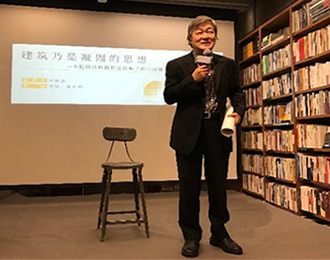
Source: Professor Li Chien-Lang
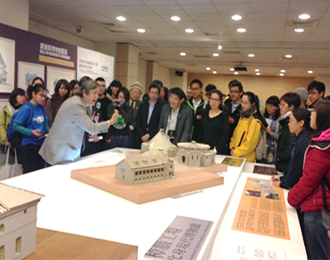
Source: Detective of Historic sites
The first stop was Tamsui, an important port in northern Taiwan and the first point of contact with Western culture. In Fort Santo Domingo, we recall the Age of Exploration, when western countries expanded their sea power and trade. The Yinshan Temple in Tamsui, which exudes the Hakka atmosphere, allows us to appreciate the background of the Tingzhou people who came to Taiwan across the sea. The Chen De-Xing Hall in Datong District, Taipei City, tells the story of the Chen clan in northern Taiwan during Japanese rule. The Confucius Temple is a reflection of the simple spirit of Confucianism, and the Bao’an Temple, dedicated to the Taoist Emperor Bao Sheng, has exquisite decorative art. The North Gate in the Zhongzheng District of Taipei City is an ancient city gate preserved in the original form of Minnan-style architecture during the Qing dynasty.
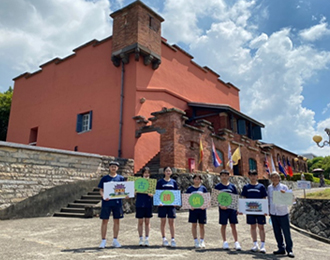
Source: Detective of Historic sites
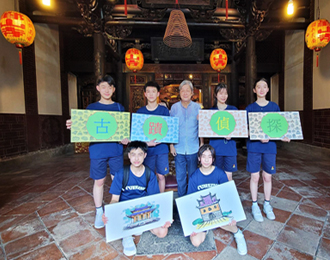
Source: Detective of Historic sites
Through a field trip to these representative historic sites and buildings, we can understand the history of Taiwan from the past to the present and develop a deeper connection and affection for the land. The decorative carvings of a temple, the structural configuration of a commoner's residence, or the functional design of a fortress all tell the story of different periods of time. To maintain the original appearance and authenticity of the historic sites and buildings, Prof. Li upholds the concept of "restoring the old as the old." We also realize that preserving these precious cultural assets ourselves is not enough. Still, we must combine the strength of all people to create a pluralistic community and achieve the goal of a friendly environment.
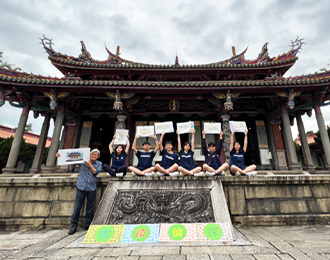
Source: Detective of Historic sites
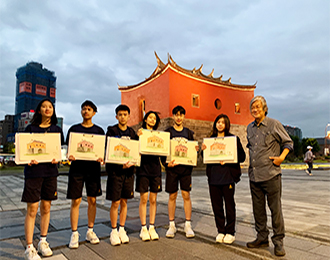
Source: Detective of Historic sites
2. Project Summary
Professor Li Chien-Lang has been involved in the study of historic sites and architecture for more than 40 years. "In 1981, the Executive Yuan established the Council for Cultural Affairs (CCA), and in the following year, the Cultural Assets Preservation Act was promulgated. Professor Li served as a member of the Antiquities and Historic Sites Examination Committee and has conducted many studies on cultural assets, published over 100 works, and completed important restoration work on historic sites. He specializes in the dissection of architecture through hand-drawn drawings.
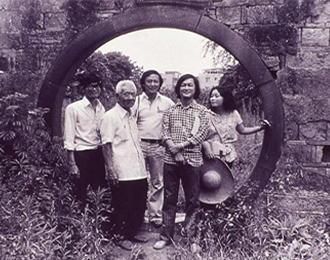
1978 On-Site Investigation
(Lin Family Mansion and Garden, Banqiao)
Source: Professor Li Chien-Lang
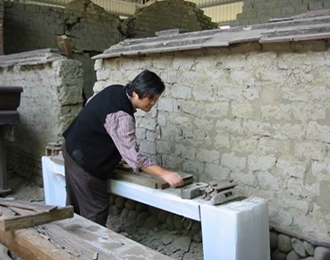
2005 Restoration of the Historic Site
(Lu Mansion, Fengyuan)
Source: Professor Li Chien-Lang
This project revolves around Professor Li Chien-Lang, an antiquities enthusiast. It illustrates Professor Li's contribution to the study of antiquities and the preservation and promotion of cultural assets from different aspects. The research framework includes an introduction to historic site scouting, including the process of enlightenment, related writings, chronology, and maintenance and examination of traditional architecture; deconstruction of six categories of classic ancient buildings from the viewpoint of hand-drawn diagrams; research and investigation utilizing on-site visits to historic sites and buildings, interviews with people and questionnaires; participation in various activities and experiences, such as visits to special exhibitions of hand-drawn diagrams, lessons in perspective drawing and tours of historic sites, and planning campus outreach activities. Finally, we will set up a website to present the complete research results so that the world can see Taiwan's efforts in preserving historic sites and buildings.

2016 Painting for the Exhibition
Source: Professor Li Chien-Lang
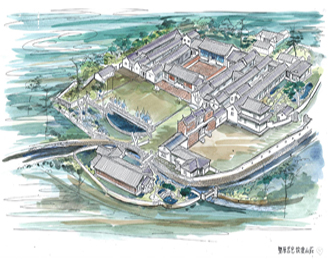
Lu Mansion, Fengyuan: Hsiau-Yun Villa,
Painted by
Li Chien-Lang.
Source: Professor Li Chien-Lang
We hope that through this project, echoing the theme of the 2023 Expo: Be Kind & Unite, we can systematically share and pass on Professor Li's knowledge and experience in the study, preservation, and promotion of historic sites, to broaden everyone's knowledge and vision of such sites and further develop a closer connection and sense of identity with the land where they grew up.
3. Network Environment
Our school has a computer classroom, and each computer is connected to the Taipei City Education Network Center through a fiber optic network. Most of the time, we spend our time discussing, searching, and printing information.
Our partner's home network environment: fiber optic internet / ADSL / cable.
How our partners handle data: We use Gmail and Line (a messenger app) to transfer files for research data sharing and consolidation, use USB flash drives to handle data at school or home, or use cell phone video chats to discuss related content.
How to contact and communicate with partners: We communicated and shared data via cell phone/tablet/computer/USB flash drive at any time.
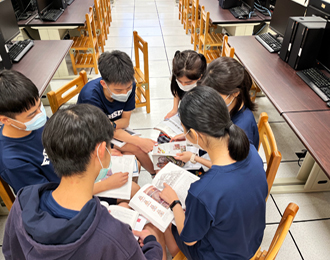
Source: Detective of Historic sites
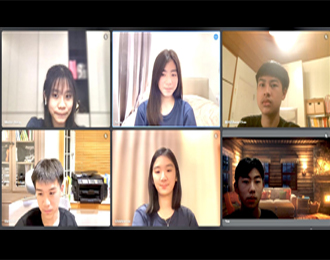
Source: Detective of Historic sites
4. Challenges to overcome
At the beginning of the project, "historic sites and architecture" was a new field for us. Although everyone has visited some historic sites before, we were unfamiliar with the definition, classification, and terminology related to architectural structures and how to appreciate the beauty of these sites and buildings. To grasp the key points of the study within a short period, we collected information about historic sites and architecture from the Internet and read Professor Li's books. Through sharing books, exchanging ideas among the group members, and following Professor Li's fieldwork, we could better fit the theme in the planning of the interview and the questionnaire design in the subsequent execution of the interview.

Source: Detective of Historic sites

Source: Detective of Historic sites
In addition to enhancing the understanding of the research topic, we also had to overcome the difficulties of presenting the data concisely and the time constraints of the research. From the summer when we decided to form the team and decided the research theme and direction to the subsequent implementation of various activities, including interviews with people, questionnaires, fieldwork, and various experiences and campus outreach activities, which had to be completed in just two to three months, it was indeed a major challenge. To accomplish the final goal, we built a consensus and worked together as a team, which was worth the hard work.

Source: Detective of Historic sites

Source: Detective of Historic sites
5. Insights
The most rewarding thing is that under Prof. Li's guidance, we now have a more comprehensive understanding of Taiwan's historic sites and buildings. In addition, we can observe the historic trajectory of Taiwan from the past to modern times. Through the actual investigation, together with the hand-drawing experience, we could walk into the historic sites and buildings, experience the beauty of the buildings, and read the stories behind them. What is more, we also gained a sense of accomplishment when conducting the campus promotion activities, hoping to guide students to understand and appreciate historic sites and buildings in an easy-to-understand, lively and interesting way and then to plant the concept of caring for historic sites and friendly environment in their hearts.

Source: Detective of Historic sites
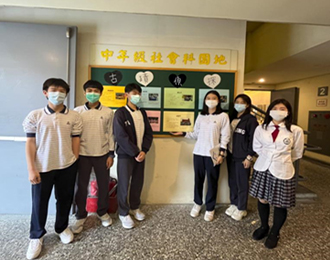
Source: Detective of Historic sites
From the development of the research topic to the actual implementation of the project, the schedule was very tight, testing our time management skills and the efficiency of project implementation. Under the guidance of our teachers, we kept making corrections and worked together towards a common goal. Through this research project, we were able to learn more about the history of this land. Each building is the most precious footprint of Taiwan, which deserves to be cherished and valued, and we hope that everyone will do their best to care for and protect these historic sites and buildings and continue to pass on the memories of the times!

Source: Detective of Historic sites

Source: Detective of Historic sites








